Is Wool Vegan? Guide to Vegan Wool Alternatives


When winter rolls around, many turn to wool to stay warm. While a wool hat or scarf may provide some heat for the person wearing it, the reality for sheep is unfortunately much less warm and fuzzy. So if you’re wondering “Is wool vegan?” or “Do vegans wear wool?”, we’re here to break it down.
Here are 8 compelling reasons why you should stick to clothing made from vegan fabrics and plant-derived materials and choose to knit with vegan yarn (or “acrylic yarn”), and why being vegan means letting wool stay on sweet and sensitive sheep.
Call us crazy, but we don’t want someone shaving our hair off without our permission because it would make them a nice coat or a pair of socks.
But when it comes to sheep, it’s not unreasonable to think that these fluffy-haired creatures could probably use a haircut every now and again. And why not put all that sheared wool to good use in sweaters, socks, hats, blankets, and beyond to keep us warm?
It’s making use of something that would otherwise go to waste, isn’t it?
Well, not quite.
Table of Contents
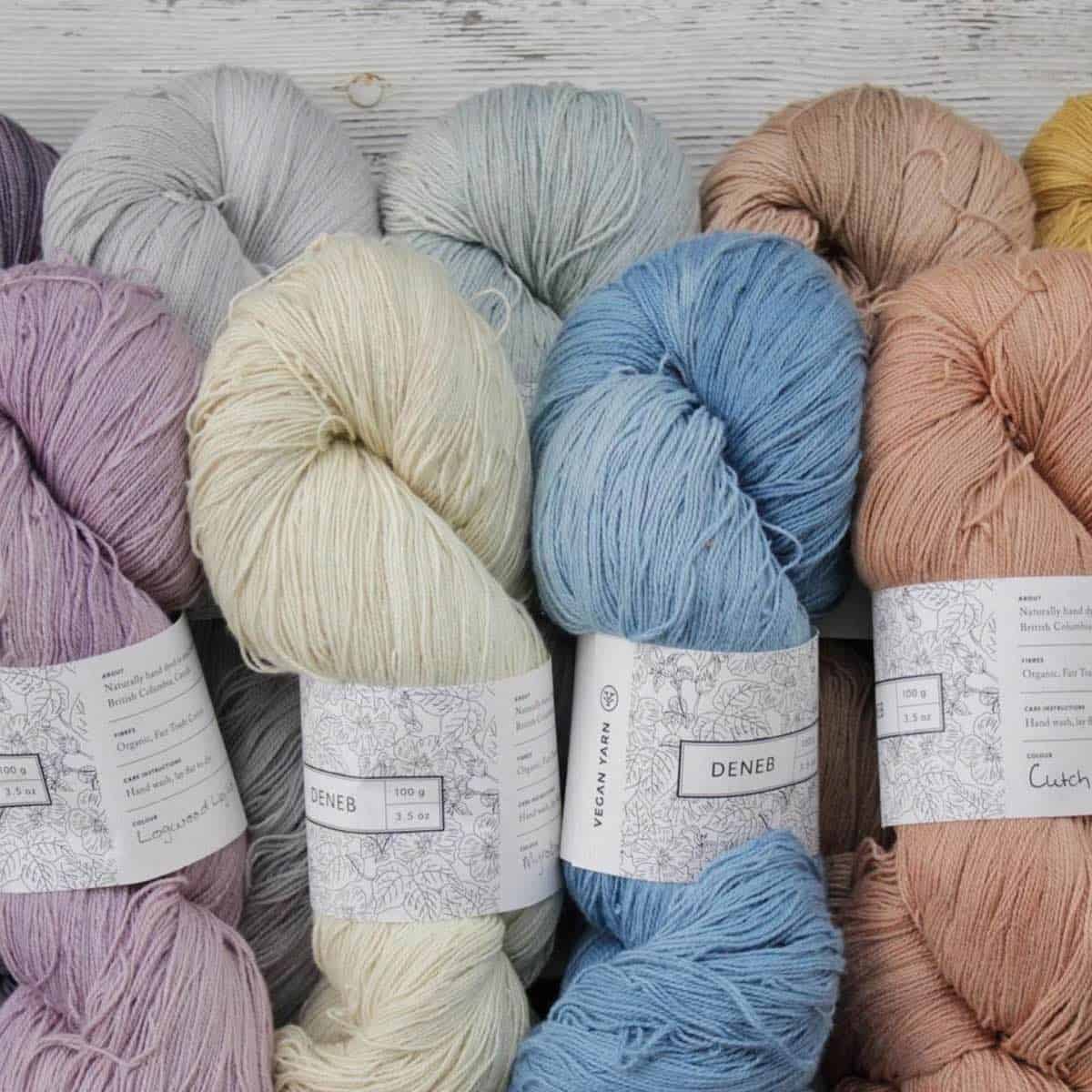
Common Wool Assumptions
You may assume that:
- Sheep don’t have to be killed to shear their wool
- Sheep need haircuts, so we’re doing them a favor
- The shearing process is painless—like getting a haircut!
- We need wool to keep warm
You are not alone, as I at one time thought these things too. Sadly, as I learned more about the wool industry, I realized that all of these assumptions are way off base.
Sure, sheep don’t necessarily have to be killed in order for their wool to be trimmed. And the shearing process usually only takes a few minutes.
But just because the shearing process is relatively quick doesn’t mean that it’s a painless or untraumatic experience for the millions of sheep who are coarsely sheared each year for the sake of making clothing. And in almost all cases, the sheep used for wool are eventually sent to slaughter.
There are hundreds of reasons why people everywhere should abandon wool. We make it easy with our vegan knitting guide and article all about vegan yarn! But if you need some convincing, we’ve collected 8 of the most pressing that explain why wool isn’t as innocent as you think and why it no longer deserves a place in your closet.

Is Wool Vegan?
No, wool is not vegan. Since veganism is a lifestyle that aims to avoid all animal-derived products including food, clothing, and cosmetics as well as forms of entertainment and sport that use animals, and wool is an animal product, wool is inherently not vegan.
Vegan Wool Alternatives
Vegan wool can be made of a variety of materials including:
- Bamboo: Bamboo fiber is known for its softness and moisture-wicking properties, creating a wool-like texture that’s gentle on the skin.
- Cotton: Sourced from cotton plants, it’s soft, breathable, and biodegradable, making it a versatile and eco-friendly choice for vegan wool.
- Linen: Linen, made from flax fibers, is known for its breathability and natural luster, providing an animal-free alternative to wool.
- Hemp: Hemp fabric is durable, eco-friendly, and offers natural insulation, making it a valuable option for vegan wool enthusiasts.
- Rayon: Often derived from plant cellulose, rayon is a versatile vegan wool material that can imitate the texture and feel of traditional wool, offering a cruelty-free option for eco-conscious consumers.
- Nylon: Although not a plant-based material, nylon can be produced using recycled or sustainable practices, reducing its environmental impact and providing a vegan-friendly alternative.
- Nettle: Nettle fiber is made from the stalks of the stinging nettle plant. It produces a fine, silky yarn that can be used as a vegan wool substitute, offering a unique and sustainable choice.
Wool-Free Vegan Outerwear Brands
Wool can make its way into all sorts of products: from hats and blankets to women’s peacoats and men’s suits. Luckily, there are cruelty-free versions of all of these! These days, it’s easy to stay warm in ethically made clothing from conscious brands.
Some awesome vegan outerwear brands to look out for include:
We also put together a vegan wool socks guide to help your feet stay warm in the winter.
Of course, you can also find all sorts of “accidentally vegan” products that just so happen to be wool-free. Shopping at budget-friendly stores like Target make that particularly easy as animal-derived fabrics tend to be significantly more expensive. Just be sure to check the label on any products you buy!
8 Reasons Why Wool Isn’t Vegan
Let’s go further in depth about the major issues with the large-scale wool industry:
1. The Cruel Practice of Mulesing
Most of the world’s wool comes from Australia. In Australia, most commercially grown sheep undergo a painful process called mulesing. Mulesing is an extremely painful procedure in which chunks of skin around a sheep’s tail are roughly chopped off (without anesthetic, mind you).
This is done because the wool in this fluffy booty area can otherwise become dirtied and infested. Urine, feces, and dirt can build up and lead to a maggot infestation called flystrike. Flies are often attracted to this moist and dirty wool, leading them to hatch their eggs there. These eggs typically hatch within 24 hours, after which the maggots will feed on the sheep’s skin for up to three days, putting the sheep at high risk for death if their flystrike isn’t treated.
While this may sound like an attempt to save our sheep friends from an agonizing death, it seldom is. Mulesing is often performed without any painkillers, with research suggesting that the excruciating pain from mulesing can last up to 48 hours.
Mulesing is so cruel that in 2018 New Zealand banned it altogether. In New Zealand, you can now be persecuted as a convicted criminal for mulesing a sheep. You’ll be fined $5000 (if you’re an individual) and $25,000 (if you’re a corporation).
Nevertheless, mulesing is not an illegal practice throughout most of the world. If you’ve purchased wool items (which I’m sure we all have), it’s likely you’ve been unknowingly supporting this practice.
2. We Bred Sheep To Have Wrinkles
After reading about mulesing, you might think: well, yes it’s painful. But it’s preventing flystrike and other issues that can ultimately harm the sheep, so it sounds necessary. Causing one harm to prevent another kind-of evens out, doesn’t it?
Unfortunately, we need to consider that this isn’t a problem inherent to sheep in their natural form. Today’s farmed sheep have been purposefully bred to have extremely wrinkly skin so that they’ll produce more wool than they ever would have without human intervention.
After all, extra wrinkly sheep = more wool = more money for producers.
On the surface, the wrinkly sheep we’ve created through selective breeding sound innocent enough—and extra-adorable!
But unfortunately, it is due in no small part to having this wrinkly skin that sheep are now forced to undergo mulesing in order to make them less susceptible to flystrike.
3. We Bred Sheep to Produce Wool Continually
Sheep existed independent of humans long before we came along and decided to domesticate and farm them. And before we intervened, sheep never got sheared…and guess what? They were doing just fine.
Take a look at wild sheep. You’ll notice that many periodically shed their wool. And no, they don’t overheat or have trouble moving around from excess wool. Those issues are human-caused problems that arose as a result of an agricultural industry acting without concern for the wellbeing of the animals.
But we’ve bred domesticated sheep to grow wool year-round, making it all but unavoidable that they will have to undergo the process of shearing multiple times in their lifetime.
4. Handled Without Care
It’s not uncommon for sheep shearers to be paid by the volume of wool they shear, not their hourly labor. This, in turn, can lead to shearers handling each sheep as quickly as possible, often with little to no regard for the sheep’s physical and emotional well-being.
While the details are quite gruesome, PETA’s landmark 2014 exposé showed how cruelly many sheep are treated by shearers, as did a 2018 report from a sheep shearer who worked in the United States and Australia.
Among other things, witnesses reported that sheep were tossed around and slammed onto hard floors. They had their heads and necks stepped on and received cuts on multiple parts of their body.
While the exposé is certainly unsettling, it is a wake-up call that many of us need that most commercially-available wool products are not cruelty-free or ethically-sourced.
5. Sheep Are Often Starved Prior to Shearing
According to an article by PETA, it’s not uncommon for sheep to not be given any food or water up to 24 hours before being sheared so that they’ll be more docile while being sheared.
Imagine how frightening it must be to undergo shearing as a defenseless animal. Now magnify that fear by knowing that you’re not physically or mentally strong enough to escape. You don’t have the energy to protect yourself. How would you feel?
6. Many Undergo Painful Castration & Tail Docking
When male sheep are just a few weeks old, it’s not uncommon for them to be castrated. This is done to avoid unplanned pregnancies and make the males less aggressive.
One popular means of castration involves putting a tight rubber band around the testicles. The blood supply will be cut off so that the testicles will eventually wither and fall off after a few weeks.
Sheep also often endure tail docking at a young age. This is commonly done using either a rubber ring or a hot iron blade. Both techniques are known to be painful, yet they are still commonly performed and considered to be an industry standard.
7. Females Undergo Painful Forced Insemination
As with other commercially-grown livestock, it’s not uncommon for female sheep to be artificially inseminated.
One method involves sticking a metal rod into a sheep’s abdomen so that the semen can be inserted into her uterus. Not only can this procedure be invasive and frightening, but it’s also often done without painkillers.
8. A Sheep’s Trip to Slaughter Is Horrendous
Unfortunately, many sheep are mistreated again in the days leading up to their deaths.
For example, each year thousands of sheep are crammed onto trucks for hours or days at a time or transported to overseas markets on multi-tiered ships. Oftentimes they aren’t given sufficient food and are exposed to unregulated conditions, leading many to die or fall ill before arriving at their final destination.
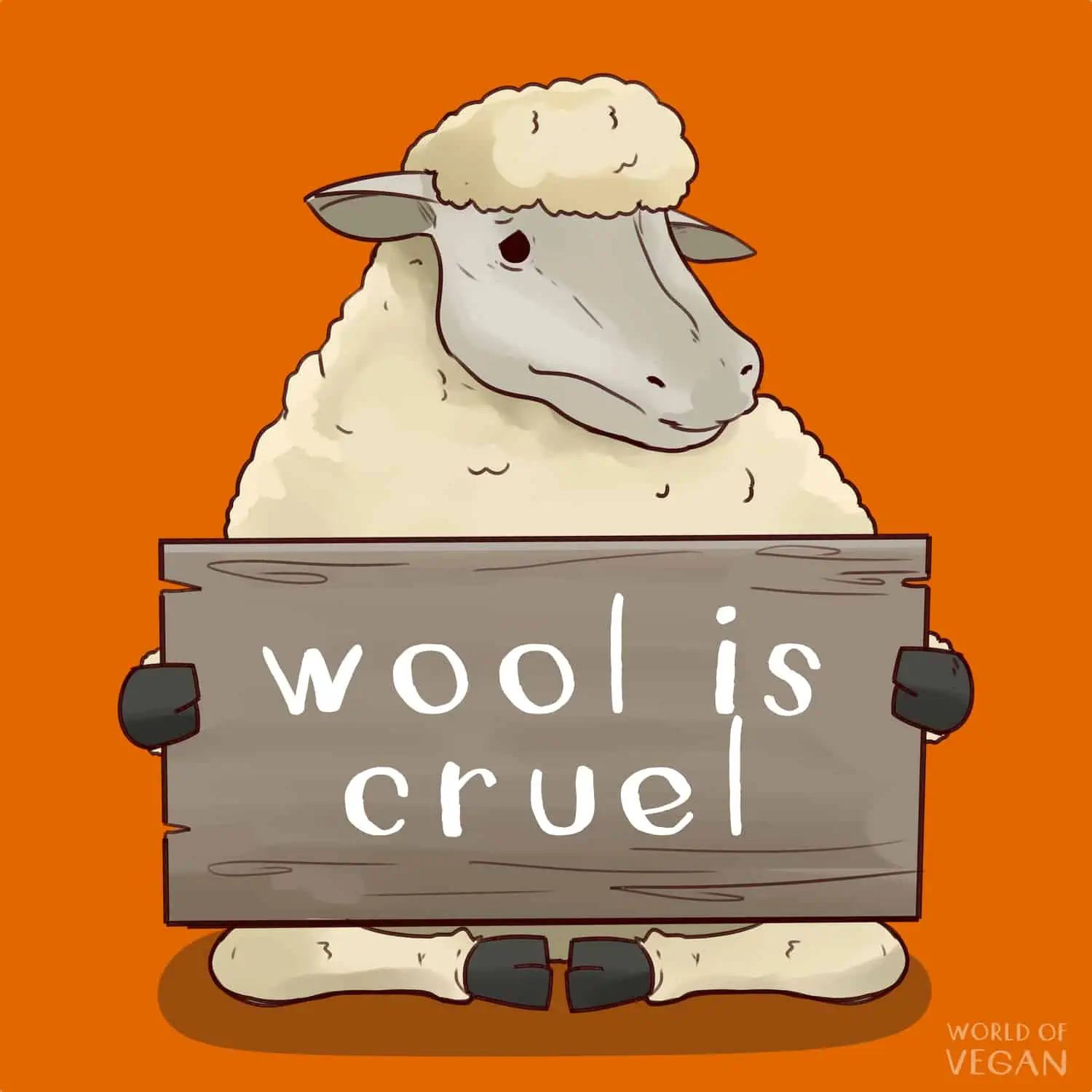
Is It Possible to Source Ethical Wool?
In theory if you had your own companion animal sheep and gave them a haircut as a part of their care, and used that hair to make yarn, it is theoretically possible to obtain cruelty-free wool. The issue is that unless you are raising, caring for, and shearing the sheep yourself, there is no way to know with certainty that wool was obtained in a truly humane way.
Furthermore, as soon as wool turns from sheep’s hair into a commodity sold for profit, the care and wellbeing of the sheep is no longer the only priority, and as with any good business, the goal is to reduce costs and that often comes at the expense of the animals involved. Whenever an animal product is sold for profit, especially on a large scale, it is likely not as “innocent” and “humane” as it appears to be on the store shelf.
Some vegans might say that there is no way to obtain wool without it being exploitative on some level. Others may say that wool repurposed from rescued sheep who are cared for as animal companions and never sent to slaughter at the end of their life fits within their identity of vegan. Wherever you fall on the spectrum is fine — there is no such thing as a “perfect vegan” and for complicated topics such as this, there are different schools of thought, and that’s okay!
But I image we can all agree that mainstream wool is not animal-friendly, nor vegan, for all of the reasons we’re about to share.
How To Help Sheep in the Wool Industry
We know that after reading this article you’re probably feeling a little bummed out. Or perhaps even angry that the wool industry can be so abusive to innocent animals. But we strongly encourage you to channel these feelings into something positive and constructive.
If you want to help, you can:
- Promise yourself that you won’t buy wool-containing products anymore and will choose cruelty-free options instead.
- If you love to knit, choose vegan yarn (check out our vegan knitting guide)
- Write a letter (or email) to your favorite brands asking them to replace the wool in their products with cruelty-free alternatives.
- Educate friends and family about why wool isn’t cruelty-free (you can share this article to start!)
Whatever you do, remember that you can cause great change in the world with your thoughts and actions, and there’s no better time to start than today.
Wool FAQs
Is acrylic yarn vegan?
Yes! Acrylic yarn is completely animal-free and is made of synthetic fibers.
Is cashmere vegan?
Since cashmere is obtained from goats, it is not vegan.
How can I make sure I’m buying vegan wool?
Be sure to check the tag of whichever item you’re interested in. Fibers such as acrylic, fleece, and rayon are all vegan! Other common words for wool are vicuna, tweed, Angora, mohair, and merino so make sure to steer clear of those.

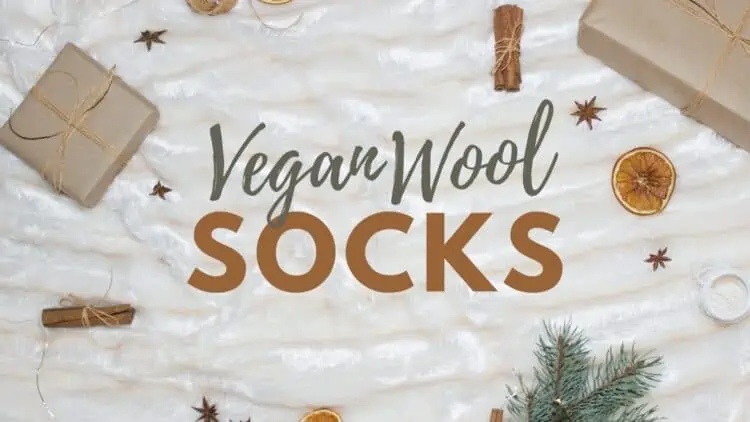
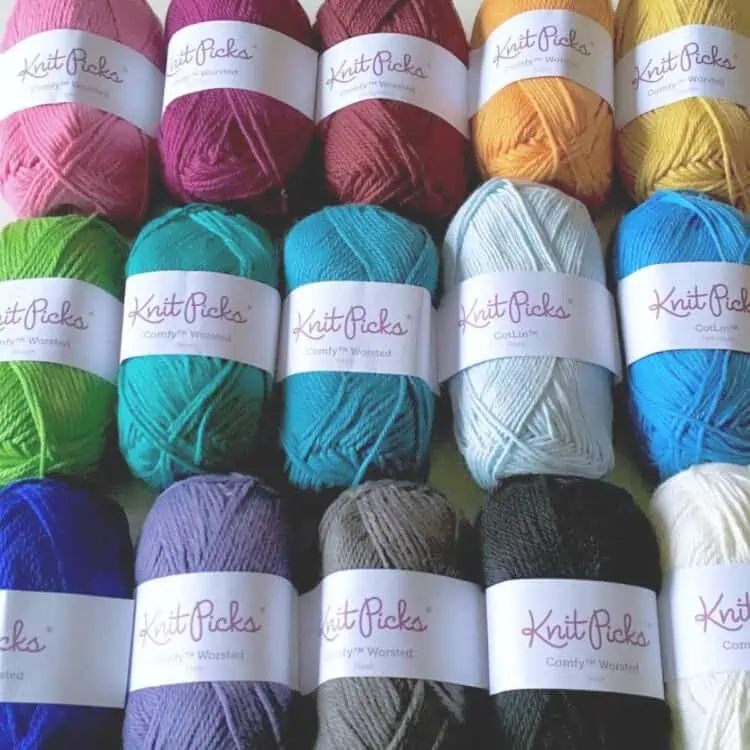
Leave a Comment
Still, I don’t really see replacing wool with synthetic fibres that never break down and do harm to the environment and animals to be an improvement necessarily. It’s the same with buying vegan leather which is really just plastic. You’d be doing the world and animals a whole lot more good just by buying 2nd hand natural fabrics.
I understand your concerns and appreciate your commitment to making more sustainable choices. It’s important to consider the environmental impact of our choices, including the materials we use in our clothing. I just wanted to add that vegan wool can actually be made from a variety of plant-based materials such as bamboo, cotton, linen, hemp, and even nettle! These materials are renewable and biodegradable, making them a more sustainable and environmentally friendly option. But I agree that buying second-hand natural fabrics is also a great way to reduce waste and support sustainable fashion.
I wish this article would state that that ‘commercial production of wool’ can be bad. Just like farming overall isn’t necessarily bad but commercial/factory farming can be very toxic and overall harmful. As someone who is in contact with a breed of animal that needs shorn to keep the animal healthy and comfortable to live out their lives happy, its hurts to be cast into a dark light and be told the care given to those animals is cruel. Just a word of thought about generalizing and pigeonholing the subject of wool/fiber.